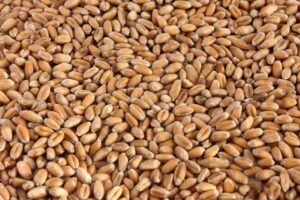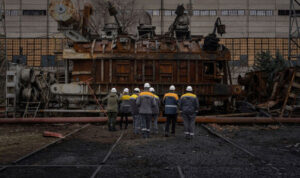
The volume of remittances to Ukraine for January-May 2025 decreased by 15.4% to – $3.5 billion, in particular net remuneration of labor decreased by 18.7%, and the volume of private transfers – by 11.2%, according to the data of the balance of payments of the National Bank of Ukraine (NBU). As noted in the statistics, in May, the volume of private money transfers decreased by 13.2%, to $0.7 billion.
“Wages that Ukrainians receive from abroad decreased by 9.5%, and other private transfers received through official channels decreased by 9.7%,” – commented the National Bank.
Overall, the volume of transfers through official channels in May 2025 was 9.6% lower than in May 2024, while receipts through informal channels decreased by 18% year-on-year.
In May 2025, the primary revenue balance turned negative to $45 million against a surplus of $20 million in May 2024.
“The decline in labor compensation receipts (down 16.9%) was more rapid than the decline in investment income payments6 (down 2.7%).” The secondary income balance surplus shrank,” the regulator explains.
At the same time, the secondary income balance surplus decreased to $0.7bn from $1.0bn in May last year due to a reduction in technical and humanitarian aid.

On July 19, 2025, the UKRNAFTA filling station in Lviv will host a hot dog festival, during which a national record is planned to be set. Together with the street food brand Mr.Grill, the organizers plan to cook 1000 hot dogs in one hour.
The record will be recorded by representatives of the National Register of Records of Ukraine in the nomination: “The largest number of hot dogs cooked at a filling station in 60 minutes”.
The festival will take place at the following address:
м. Lviv, 300 Shevchenka St. (territory of the UKRNAFTA filling station).
The event starts at 12:00.
The slogan of the event: “Grab the summer by the hot dog!”
After the record is officially set, all the hot dogs will be distributed free of charge among the festival visitors.
The event will also feature a rich entertainment program, including:
Special activities have been prepared for children:
Official rules of the campaign are available here .
UKRNAFTA and its partners invite Lviv residents and guests to spend the day off together, bring their families, witness the record setting and generally join the festive atmosphere.
“Ukrnafta is the largest oil company in Ukraine and the operator of the national network of filling stations. In March 2024, the company took over the management of Glusco’s assets and operates a total of 545 filling stations – 461 owned and 84 managed.
The company is implementing a comprehensive program to restore operations and update the format of its filling stations. Since February 2023, the company has been issuing its own fuel coupons and NAFTAKarta cards, which are sold to legal entities and individuals through Ukrnafta-Postach LLC.
Ukrnafta’s largest shareholder is Naftogaz of Ukraine with a 50%+1 share.
In November 2022, the Supreme Commander-in-Chief of the Armed Forces of Ukraine decided to transfer to the state a share of corporate rights of the company owned by private owners, which is now managed by the Ministry of Defense.

Ukraine’s winter wheat harvesting campaign has started, with initial yields still at a low level, according to the analytical cooperative Pusk, created within the Ukrainian Agrarian Council (UAC).
“The first results are not impressive yet – the average yield is about 2.1-2.15 tons/ha. But this is only the beginning of the campaign, and under favorable weather conditions we expect the average to increase,” the analysts said.
They emphasized that the weather conditions remain favorable for the harvesting, as no precipitation is expected this week and next week, so the field works will continue without any delays.
“However, on the grain market, traders are currently focused on barley and rapeseed. According to forecasts, ships with wheat are expected to start entering ports on July 15-18, so the market is still relatively calm,” the experts said.
According to their information, wheat prices are currently fluctuating around $210/ton for the third class on a CPT-port basis. Analysts expect a gradual increase to $230-240/ton in the fall, and the price peak may occur in December-February, when the price may reach $250-260/ton.
The global market is also showing signs of supply reduction.
“The US and Russia, as key exporters, have serious problems with the harvest. This creates the potential for further growth in world prices. If the losses are confirmed, we may see $230-240 per ton in August-September,” Pusk predicts.

“DTEK Energy has invested UAH 2.9 billion of its own funds in Ukrainian mines since the beginning of 2025, the company said in a press release.
“The invested funds allow us to maintain the fuel reserves necessary for the operation of thermal generation, as well as to continue intensive preparations for the winter,” the operating holding said.
Since the beginning of this year, DTEK Energy miners have put seven new coal faces into operation.
“We maintain a high level of investment in our coal mining enterprises to ensure the rhythmic operation of mines and coal production. We need to be sure that our generating facilities have enough fuel to cover the summer peaks in electricity consumption and the upcoming heating season,” said DTEK Energy CEO Aleksandr Fomenko.
Since the beginning of the full-scale invasion, the company’s investments in Ukrainian coal mining have totaled over UAH 21.4 billion, which were spent on the construction and repair of capital mine workings, completion of coal faces, mine tunnelling equipment, underground mine transport and production capacity support projects.
“DTEK Energy provides a closed cycle of electricity generation from coal. The company’s installed capacity in thermal generation amounted to 13.3 GW as of January 2022. The company has established a full production cycle in coal mining: coal mining and enrichment, mechanical engineering and maintenance of mine equipment.

The Federation of Automobile Employers of Ukraine (FAU), citing data from Auto-Consulting, has published statistics on sales of new passenger cars.
According to the data, 33.773 thousand passenger cars were sold in Ukraine in January-June.
The first six places in the market remained unchanged compared to May: Toyota is in the lead with sales of 887 cars (4% more than in June 2024, but 20% less than in May 2025), Volkswagen is in second place, with sales more than doubling in June compared to June 2024 – up to 557 units, Renault is third with 547 cars (+32%).
The fourth place is taken by Skoda, which in June increased sales by 69% compared to June last year – 454 units, BYD has already steadily gained a foothold in fifth place thanks to the import of electric cars (453 units), and Huyndai was sixth (284 cars and an increase of 73% compared to June last year).
Zeekr has also increased its influence – now these Chinese electric cars are in seventh place in the Ukrainian market and are ahead of all premium brands in terms of sales.
“It was the import of electric vehicles from China that ensured Honda’s eighth place in June, and contributed to the popularity of many other cars,” according to Auto-Consulting.
The demand for German premium cars remains strong. BMW is the leader here (257 cars – 53% less than in June 2014), followed by Audi with 233 cars (+47%). Both German brands took 9th and 10th place in the Ukrainian market in June.
The FAU also cites Auto-Consulting statistics on sales of light commercial vehicles (LCVs), according to which in June they decreased by 9% compared to June 2024, amounting to 637 units, and for the first half of the year – by 4.6% compared to the same period last year, to 3,856 thousand units.
Thus, in the overall market of passenger cars and light commercial vehicles, the share of LCVs in June amounted to 9.3% (12.2% last year), and for the first half of the year – 10.2% (10.6%).
In this segment, Citroen had the best result in June, with sales up 62% by May 2025, but down 40% by June 2024, to 146 units. Renault was second with sales of 80 vehicles (57% less than in June 2024), and Peugeot took third place with 70 vehicles compared to 27 last year.
At the same time, in the first half of the year, Renault is the leader with a market share of 16.55% and sales of 638 cars (down 58% year-on-year), followed by Citroen – 522 units (-15%) and Ford – 458 units (+87%).

Sales of new passenger cars in Ukraine in June increased by 23% compared to the same month last year, reaching 6,217 units, according to the Federation of Employers in the Automotive Industry (FAU), citing data from Auto-Consulting.
“This allowed the car market to almost catch up with the results of the first half of 2024 (-0.95%) and offset the market decline at the beginning of the year and in the spring. The car market is finally on a positive track,” the FAU said in a statement on its website.
At the same time, compared to May of this year, sales in June fell by 9.3%.
According to the data, 33,773 passenger cars were sold in Ukraine in January-June.